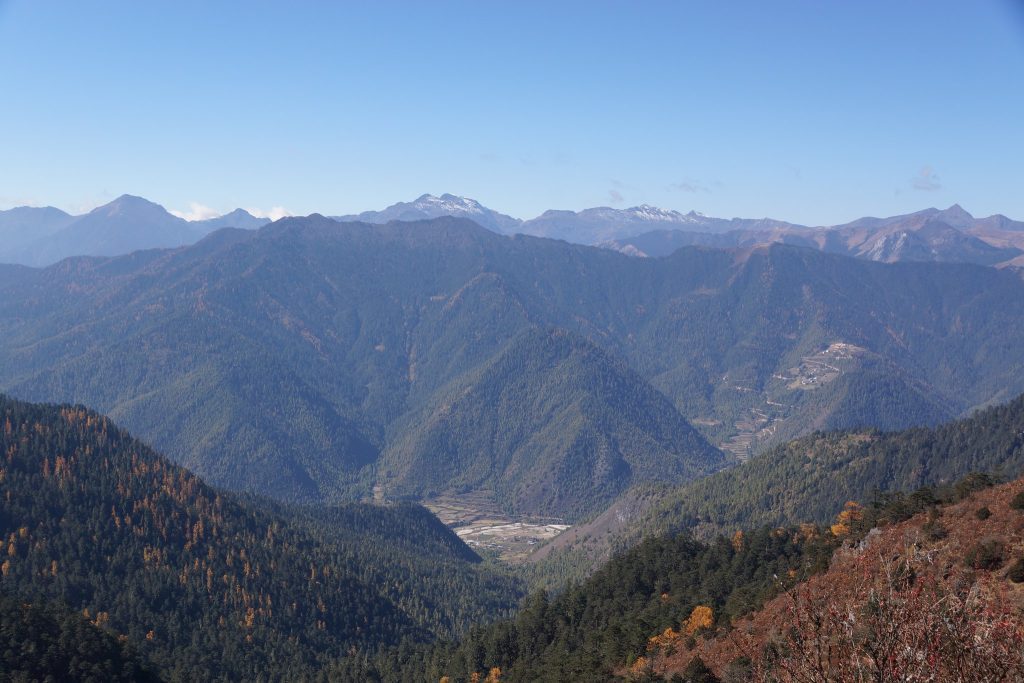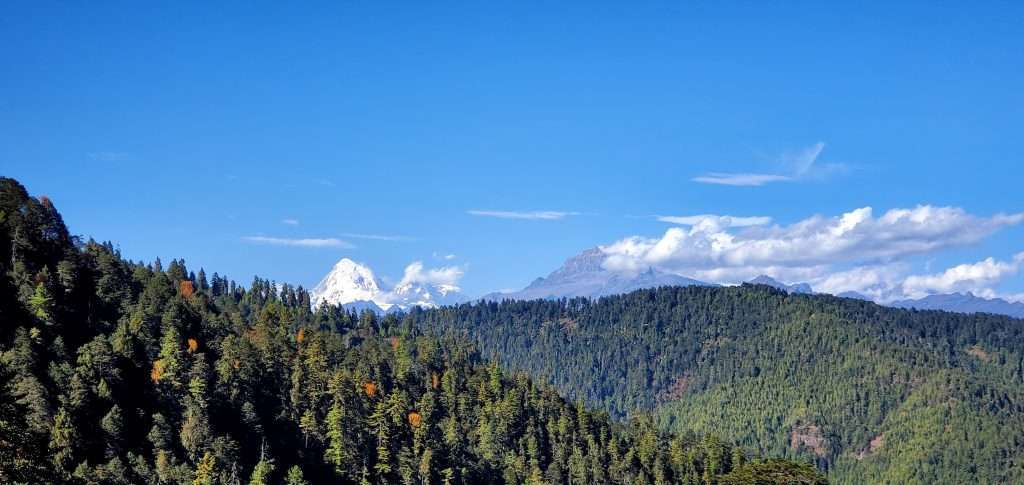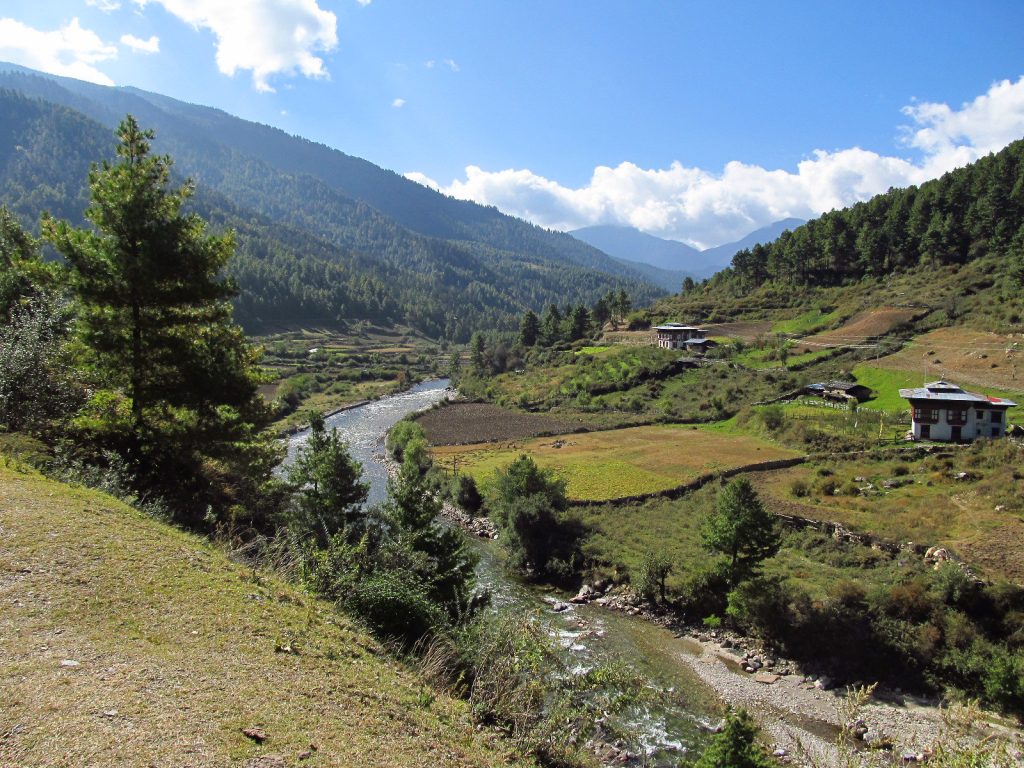
Table of Contents
Summary
Haa Valley, located in western Bhutan, is an emerging tourist destination renowned for its stunning landscapes, rich cultural heritage, and commitment to sustainable tourism practices. Nestled within the Eastern Himalayan mountain range, the valley has gained international attention, notably being selected by the BBC as one of the top travel destinations for 2025, a recognition that underscores its growing prominence in the global tourism landscape.[1][2] With an area of approximately 1,700 square kilometers, Haa Valley is not only a picturesque getaway but also a crucial corridor connecting key districts in Bhutan and lies close to the strategically significant India-China border in Doklam, enhancing its geopolitical relevance.[1]
The valley is characterized by breathtaking topography, including the Chele-la Pass, which offers panoramic views of majestic peaks like Mount Jhomolhari. This dramatic setting, combined with diverse ecosystems and rich biodiversity, attracts nature enthusiasts and adventure seekers alike.[3] Haa Valley’s historical significance is equally noteworthy, with early settlements dating back to the 7th century and the presence of key cultural sites such as the Haa Dzong and the Lhakhang Karpo and Nagpo temples. These landmarks highlight the valley’s deep spiritual and cultural roots, which are reflected in its architectural heritage and local traditions.[4][5]
Tourism in Haa Valley is grounded in community engagement, emphasizing sustainable practices that benefit both visitors and local residents. Initiatives focus on eco-tourism, responsible travel behaviors, and the promotion of local handicrafts, ensuring that economic gains are distributed among the community. Additionally, sustainable trekking and wildlife experiences encourage visitors to connect with Bhutanese culture while minimizing their environmental impact.[6][7] However, the rapid development of tourism has raised concerns about balancing modernization with the preservation of Haa Valley’s unique cultural and natural assets, making the region’s approach to tourism a subject of ongoing discussion and analysis.[8][9]
As Haa Valley transitions into a significant player in the tourism sector, it continues to honor its historical and cultural identity while adapting to the challenges and opportunities posed by an influx of visitors. This journey reflects Bhutan’s broader commitment to maintaining its cultural integrity amidst globalization, making Haa Valley a destination that promises both adventure and a deep connection to Bhutanese heritage for travelers in the coming years.[10][11]
Geography
Haa Valley is located in western Bhutan, nestled within the Eastern Himalayan Mountain range. It spans an area of approximately 1,700 square kilometers and serves as a strategic corridor connecting the districts of Paro, Chhukha, and Samtse.[1][2] The valley is situated a mere 13 miles from the disputed India-China border in Doklam, highlighting its significant geopolitical importance.[1]
Topography and Natural Features
The valley is characterized by its breathtaking landscapes, which are framed by towering mountains that provide both shelter and a sense of grandeur. One of the notable geographic features is the Chele-la Pass, which stands at an elevation of 3,988 meters and is the highest navigable point in Bhutan. This pass offers stunning panoramic views of the surrounding peaks, including Mount Chomolhari and Jichu Drakey, both of which are prominent landmarks visible from the valley.[1]
The diverse ecosystems within Haa Valley are rich in flora and fauna, with a variety of habitats ranging from subtropical forests to alpine meadows. These natural settings not only offer opportunities for adventure tourism such as hiking and trekking but also support a range of wildlife, making the area a haven for nature enthusiasts and adventure seekers alike.[3]
Accessibility
Access to Haa Valley is primarily via road, with the most common route being from the nearest town, Paro. While the valley has remained relatively isolated, it was opened to the public in 2002, which has allowed for the gradual development of tourism infrastructure. The journey to the valley is often regarded as a significant part of the experience, as travelers must navigate through the scenic Chele-la Pass to reach their destination.[1]

The strategic location and stunning natural beauty of Haa Valley not only make it a picturesque destination but also position it as a critical area for India’s security interests, particularly due to its proximity to the Indo-Tibet border.[1]
History
Haa Valley boasts a rich history that intertwines with the broader narrative of Bhutan, with evidence of early settlements dating back to the 7th century AD[4]. The valley played a pivotal role in the unification of Bhutan under Zhabdrung Ngawang Namgyal in the 17th century, which significantly contributed to the consolidation of Bhutanese power. A prominent landmark from this era, the Haa Dzong, serves as a fortified monastery and a testament to the valley’s historical importance[4].
The cultural dynamism of Haa is further enriched by its spiritual traditions, notably exemplified in the rituals performed at the Lhakhang Karpo and Lhakhang Nagpo temples. These sites are steeped in local legends, including tales of a demoness subdued by protective deities, which highlight the valley’s rich folklore[5]. The temples not only serve as places of worship but also as custodians of sacred relics and ancient stories that are integral to the identity of the Haa community.
Haa’s architectural legacy is characterized by its uniformity and adherence to traditional Bhutanese styles, which are maintained through strict building codes. This architectural consistency is reflective of the cultural heritage that has been preserved throughout the centuries, creating a unique identity for the region[6]. The community’s commitment to safeguarding its heritage is evident in ongoing conservation efforts, such as the Re-Heritage project initiated by the Heritage Sites and Archaeology Division, which aims to preserve historical structures and materials[12].
As Haa Valley transitions from a lesser-known region to a prominent tourist destination, it continues to honor its past while embracing sustainable tourism practices. This journey reflects Bhutan’s dedication to maintaining its cultural integrity amidst modernization, attracting visitors to experience its unparalleled beauty and enduring traditions[10].
Tourism
Haa Valley has emerged as a captivating tourist destination, drawing attention for its rich cultural heritage and stunning landscapes. Recognized for its commitment to sustainable tourism practices, the valley is a prime example of how travel can benefit both visitors and local communities.
Community-Based Tourism
In Haa Valley, the tourism model emphasizes community engagement, allowing locals to actively participate in the tourism industry. This engagement ensures that economic benefits are widely distributed, creating employment opportunities in hospitality and guiding, as well as promoting the sale of local handicrafts[13]. By traveling through registered tour operators, tourists contribute to a regulated entry system that helps maintain the delicate balance of local life and tourism activities[7].

Sustainable Practices
Haa Valley promotes eco-tourism initiatives that prioritize environmental awareness and cultural exchange. Tourists are often educated on sustainability practices, local wildlife, and cultural etiquette, fostering responsible tourism behaviors[7]. This approach not only enhances the visitor experience but also reinforces the sustainability of the tourism industry by encouraging respect for the region’s natural and cultural assets.
Unique Experiences
The valley’s immersive experiences, such as trekking, bird watching, and visits to rural communities, allow travelers to connect deeply with the Bhutanese way of life. Adventure tourism is on the rise, with activities that promote low-impact exploration. This includes biking, kayaking, and hiking, which have become increasingly popular among both locals and visitors looking for active, exciting experiences[14].
Minimal Environmental Impact
Sustainable trekking practices are carefully managed in Haa Valley to minimize environmental impact. Regulations require trekkers to follow responsible waste disposal practices and limit the number of visitors on popular trails to prevent overcrowding and erosion. The “carry in, carry out” principle is strictly enforced, ensuring that trekkers are responsible for their non-biodegradable waste, which helps maintain the pristine beauty of the region[7].
Accommodation and Accessibility
Accommodation Options
When visiting Haa Valley, a range of accommodation options are available to suit various preferences and budgets. Travelers can choose from luxury hotels, cozy boutique lodgings, and guesthouses that offer a more intimate experience of Bhutanese culture. Notable choices include eco-friendly establishments and homestays that provide insight into local traditions and lifestyles. For instance, popular accommodations like Damchoe’s Homestay in Thimphu feature family-friendly settings and local culinary experiences, while options like Capella Bangkok in nearby areas are renowned for their luxurious offerings and personalized services[15][16].
It’s advisable for visitors to book accommodations well in advance, especially during peak travel seasons and festivals such as Paro Tshechu and Thimphu Tshechu, as demand can be high during these times. The availability of both high-end hotels and modest guesthouses ensures that travelers can find a suitable place to stay that aligns with their travel style and budget[17][14].
Accessibility to Haa Valley
Accessibility to Haa Valley has improved significantly, making it easier for travelers to explore this picturesque destination. The valley is primarily accessed via road from Thimphu, the capital of Bhutan, which is about 70 kilometers away. The journey offers stunning views of the surrounding mountains and valleys, enhancing the travel experience. Additionally, local transport options such as taxis and shared vans are available for travelers to navigate within the valley and reach various attractions comfortably[15][14].
Travelers planning to visit Haa Valley should also be aware that permits are required for entry, which can be arranged through tour operators. These operators facilitate the process, ensuring that visitors can focus on enjoying their experience rather than navigating bureaucratic requirements[17]. Overall, Haa Valley stands out as a destination that combines natural beauty with convenient access, making it an appealing choice for travelers in 2025.
Conservation and Sustainability
Sustainable Tourism in Haa Valley
Sustainable tourism in Haa Valley emphasizes the careful management of natural and cultural resources to ensure that they remain viable for future generations. The core concept of sustainable tourism revolves around meeting the needs of current tourists and host communities while safeguarding opportunities for future visitors. It encompasses the management of resources in a way that balances economic, social, and aesthetic needs with the preservation of cultural integrity and ecological processes[8].
Community-Based Initiatives
In Haa, sustainable tourism is integrated into community-based projects that aim to harness the region’s tourism potential while promoting conservation and enhancing local livelihoods. This involves assessing the carrying capacity of the area to mitigate negative impacts from tourism, thereby maximizing benefits for both the environment and the local community. The focus on decentralization allows local stakeholders to engage actively in tourism management, ensuring that development aligns with the community’s values and needs[9].
Economic and Cultural Balance
The economy of Haa is primarily agricultural, supplemented by responsible tourism practices that respect the valley’s cultural heritage and natural beauty. Local industries are limited, and the promotion of sustainable tourism helps to create jobs while preserving traditional ways of life. The government’s commitment to environmental conservation is reflected in local practices that prioritize sustainability over rapid development[4].
Conservation Efforts
Tourism initiatives in Haa often include eco-lodges and accommodations that contribute to local conservation efforts. These establishments engage guests in understanding local environmental challenges and participate in conservation activities. Community engagement is crucial; many eco-friendly accommodations hire local staff and support local initiatives, ensuring that tourism revenues benefit the community directly[7].
Integrated Conservation Strategies
Bhutan’s holistic approach to environmental protection is evident in Haa’s conservation strategies, which include community forestry programs and sustainable agricultural practices. These initiatives empower local communities to manage natural resources, aligning their interests with national conservation goals. Efforts to mitigate climate change impacts further highlight the region’s commitment to sustainability, as Bhutan strives to remain carbon-negative[7][18].
Responsible Tourism Practices
Visitors to Haa are encouraged to practice responsible tourism, such as using established campsites to minimize environmental impact and employing local guides to enhance cultural sensitivity and ecological awareness. Trekkers are educated about local customs and the significance of natural sites, ensuring respectful interactions with the environment and local traditions[11]. Additionally, sustainable practices are promoted among tour operators, emphasizing the use of eco-friendly materials and waste management systems[19].
Through these integrated efforts, Haa Valley serves as a model for sustainable tourism that balances ecological integrity, cultural preservation, and economic benefits, thereby enriching the experience for both visitors and the local community.
References
- : Haa Valley: A Complete Guide To North East India’s Hidden Jewel
- : Travel destinations 2025: Di best places to travel go for 2025 – BBC …
- : Why Visit Bhutan in 2025: A Journey of Culture, Nature, and Peace
- : Explore Haa Valley – CBT
- : Lhakhang Karpo and Lhakhang Nagpo in Haa Valley
- : Haa Valley : The Well Kept Secret of Bhutan – Holidify
- : Background – Re-Heritage
- : Haa Valley Shines on Global Stage: BBC Travel Rates It 14th Among Top …
- : Top 10 reasons to visit Bhutan – amenbhutan.com
- : Eco Tourism in Bhutan: Sustainable Travel Guide – Amen Bhutan Tours and …
- : 8 good tourism trends for 2025
- : 10 Travel Trends for 2025 – Two by the World
- : Bhutan’s Homestays Are Preserving Local Heritage Through Puffed Rice …
- : Top Festivals in Bhutan You Can’t Miss in 2025
- : Bhutan – A Sustainable Tourism Destination – Visit Bhutan
- : Carrying Capacity Assessment Report for Haa and Phobjikha.
- : Ecotourism in Bhutan: Unlocking the Hidden Gems in 2024.
- : Bhutan Festivals: A Journey into the Heart of Bhutanese Culture
- : Everything you need to know to plan your trip to Bhutan for 2025 and 2026


